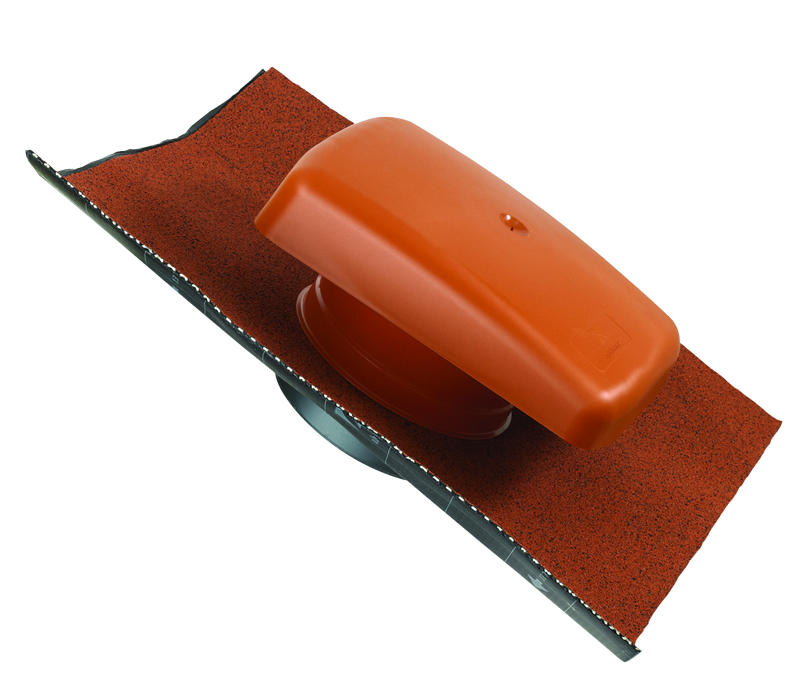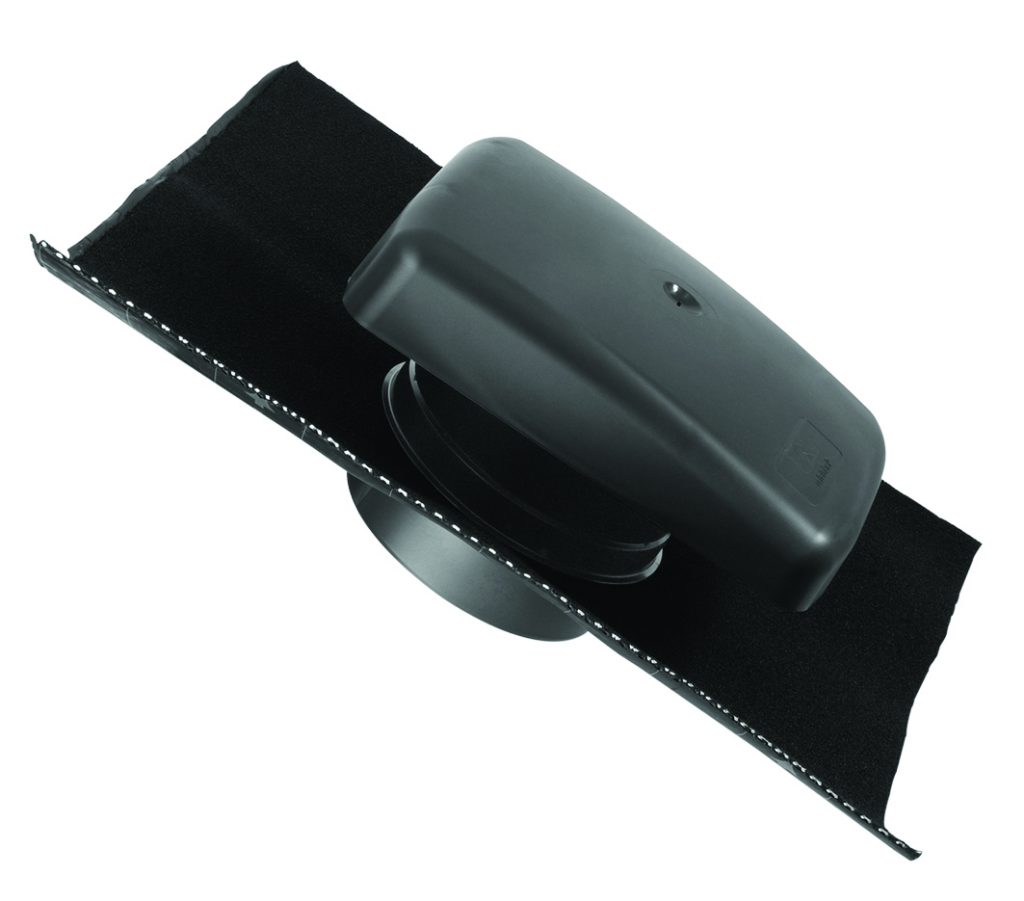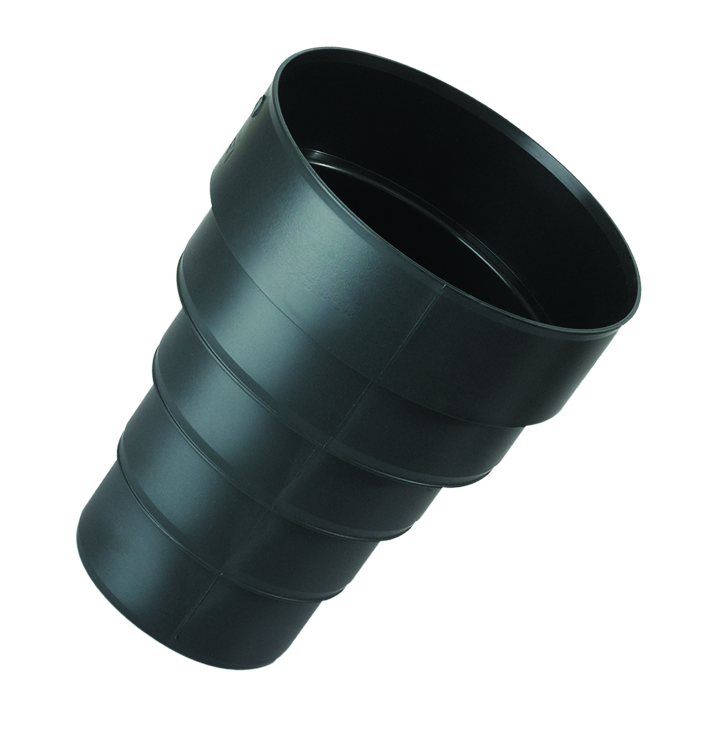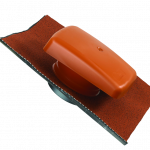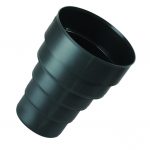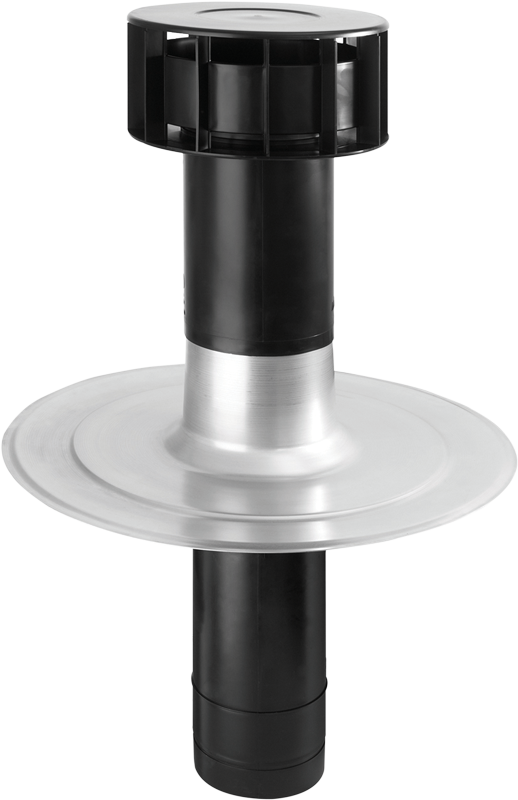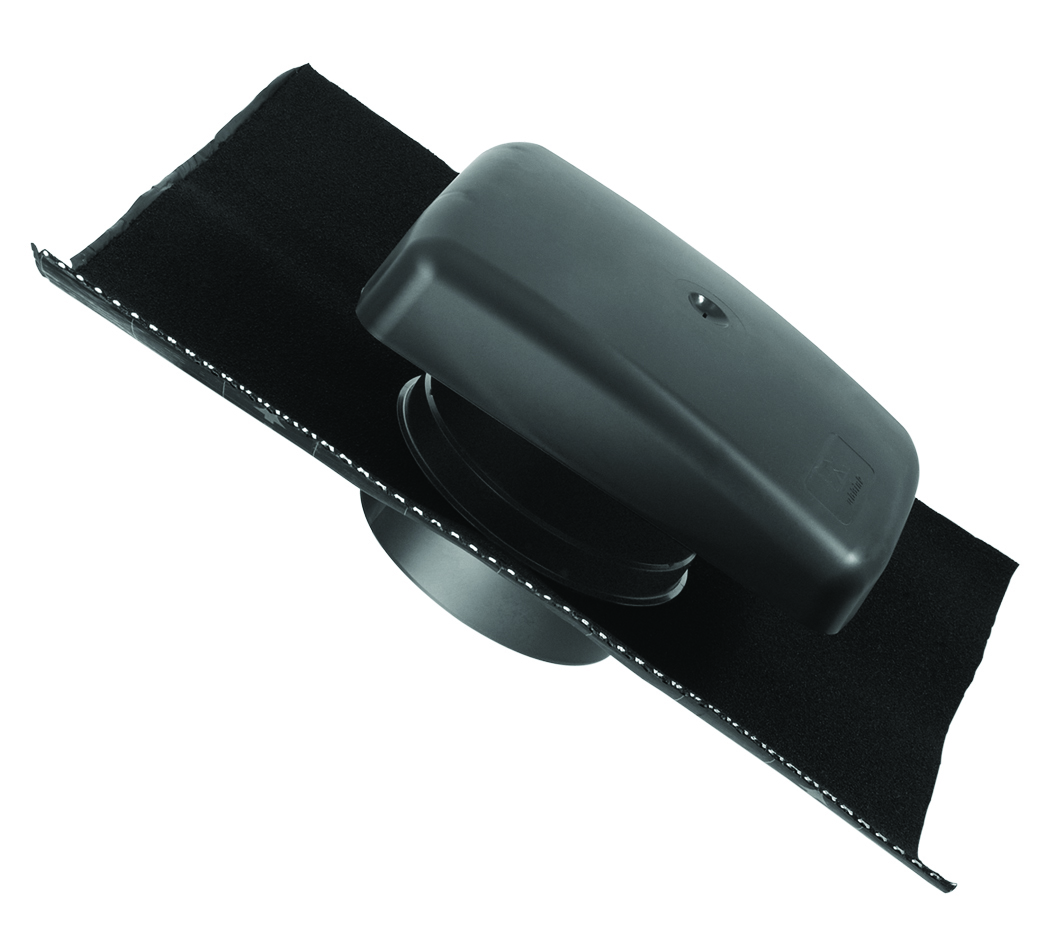Roof Terminals – Pitch roof (100-160mm)
Overview
Pitch roof (slate and tile) supply or exhaust vent with flashing included reducer.
Technical Information
Technical Information
Resistance
| Diameter | Free vent Area | Pressure/Airflow Resistance (Pascals) | |
| (mm) | (mm²) | 28 l/s | 62.5 l/s |
| 100 | 7850 | 3 | 7.5 |
| 110 | 8850 | 4.5 | 16 |
| 125 | 12250 | 5.3 | 24 |
| 150 | 17775 | 6.5 | 31 |
| 160 | 18750 | 6.5 | 31 |
Specification
Product code: UB41
Diameter connection: Stepped adaptor 100/110/125/150/160mm
Type of tile: Universal
Hooded: Hooded
Material: PVC/Ubiflex
Finish: Black or Terracotta
Performance Statement
Titon offers a range of terminals appropriate for use with continuously running mechanical ventilation systems including wall and roof types.
The terminals are purpose designed to ensure adequate weather protection whilst maintaining airflow with minimal resistance. As a general rule, terminals should offer at least 90% of the free area of the duct to which it is connected and it must also have minimal resistance to airflow (for example a typical Titon roof terminal has a resistance of <1.0 Pascal at 225m3/h).
Titon recommend that terminals are tested to an appropriate standard (such as BS EN 13141: Performance testing of components/products for residential ventilation) as the performance figures will be required to complete the system design and provide the required system performance tables for use by the commissioning contractor in accordance with the Domestic Ventilation Compliance Guide (DVCG) which accompanies Part F of the Building Regulations. Titon has gone to great lengths to offer terminals that are fit for purpose and are unable to suggest any other alternatives simply as Titon are not aware of any others that have adequate aerodynamic test results.
Titon welcomes the opportunity to comment on any suggestable versions, but experience has been that alternative terminals offered or proposed have not been designed for aerodynamic performance and do not perform adequately without causing some hindrance such as excessive resistance to airflow, formation of condensation which then enters the system or noise.

